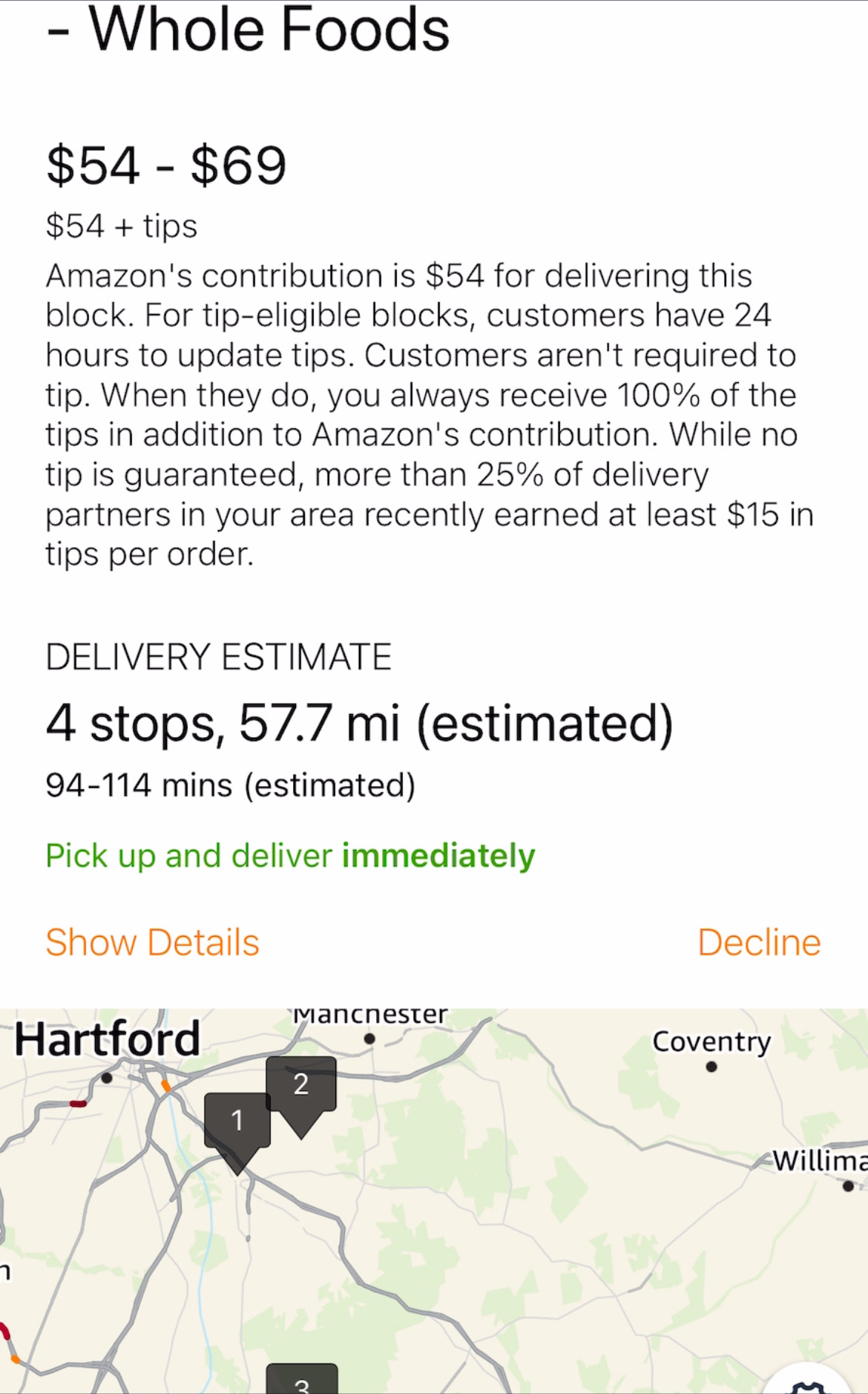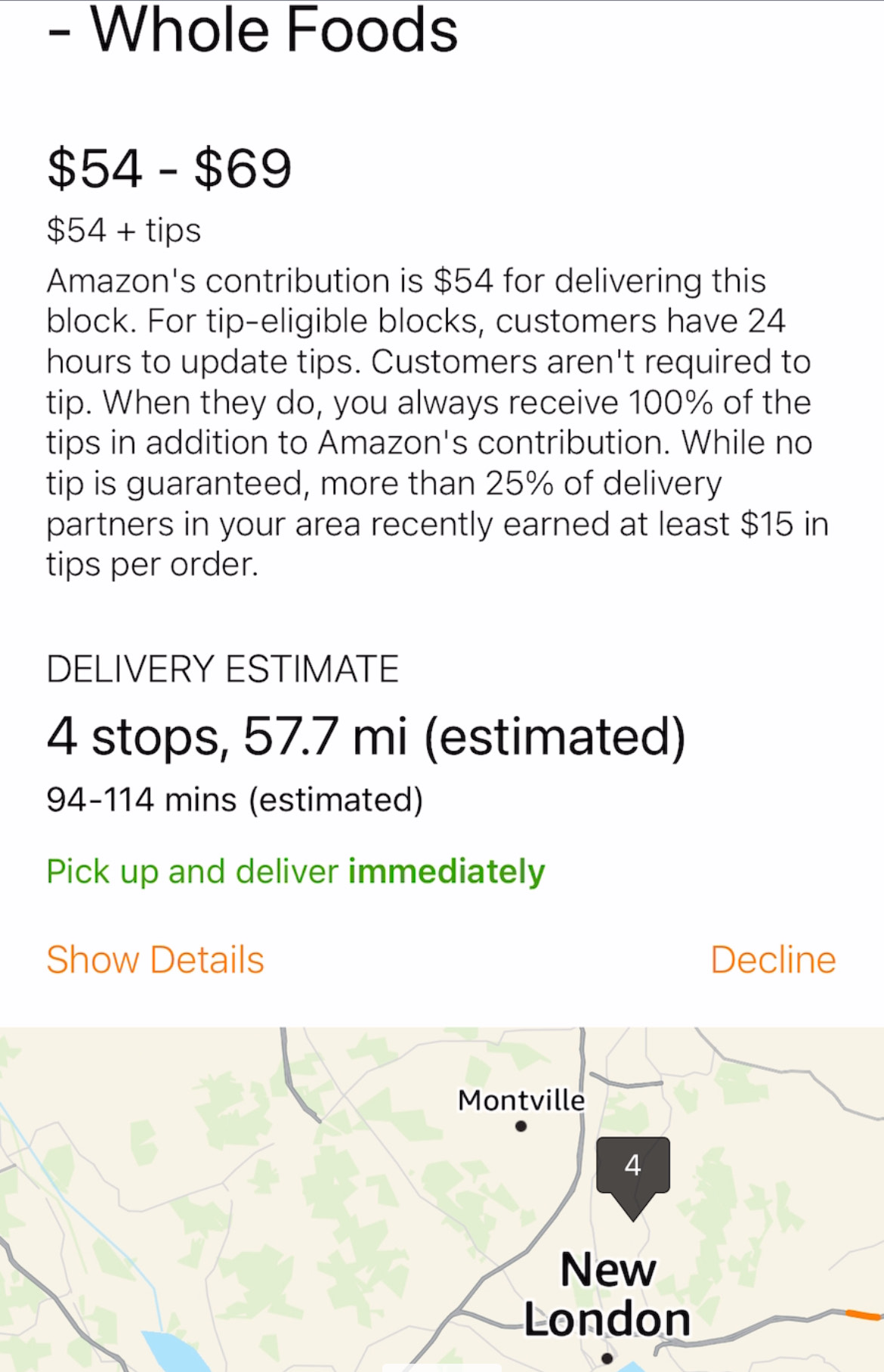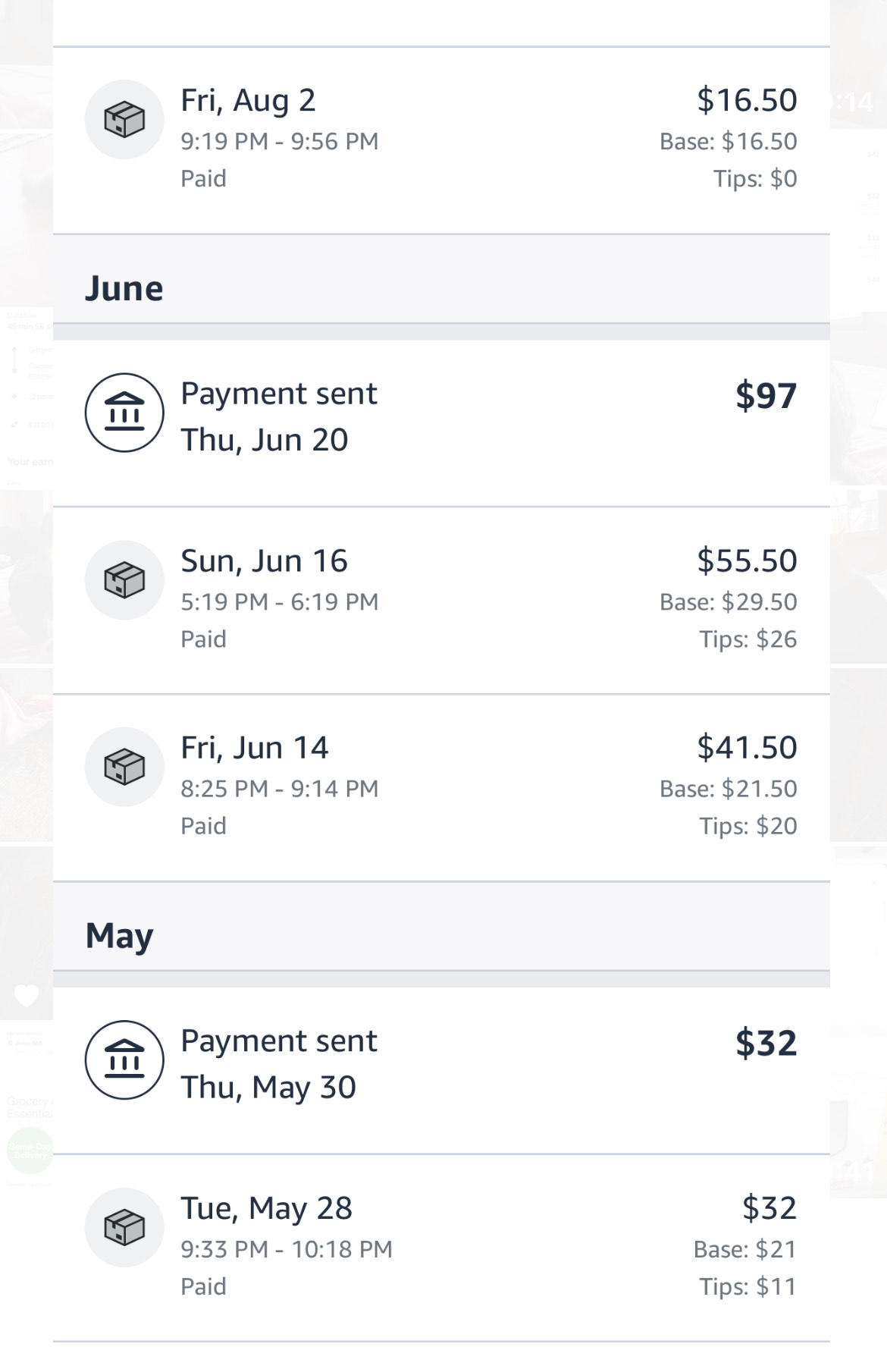Tipping your driver when ordering from Amazon Prime for Whole Foods delivery
Isn't it great that you can order from Whole Foods for delivery even though there isn't one even remotely close to where you live? How cool!
You often wonder if you should be tipping your whole foods delivery driver when ordering on Amazon Prime but...
...since you're ordering on Amazon Prime, you're certain the person delivering to you is well compensated, right? After all, Amazon is the epitome of benevolence.
....right.
First, assume that since there's a tip option, your driver probably doesn't make nearly enough without your tips.
Yes, the tipping culture memes have done an incredible injustice to those who go the extra mile to deliver your food.
I understand that tipping someone to hand you your muffin at your local coffee shop is mildly outrageous but food delivery drivers, including those who deliver your Whole Foods order are independent contractors who use their cars to deliver your order. And they go quite the distance to do so.
Not every Whole Foods delivers and that's by design. This means that drivers often have to go into neighboring states to deliver. As you can imagine, the miles add up and so does wear and tear on their cars and refuling is no joke either.
Drivers also brave weather and traffic conditions to get you your order so you don't have to go out so yes your tips are much appreciated.
OK now that we got some of the ranting out of the way, let's look at what goes into your Whole Foods order for delivery.
You place an order for a specific window of time and it is put in online with all the other orders during that timeframe. The e-commerce department of that Whole Foods is now in charge of fulfilling your order.
A Whole Foods shopper (theoretically called Amazon Prime shopper even though they're a Whole Foods employee), shops for your order at Whole Foods, which is bagged and staged and ultimately delivered by an Amazon Flex driver.
Many Amazon Flex drivers have two hour blocks during which they're scheduled to deliver. Quite often, one route will take over an hour and 60+ miles so buy the time they come back to Whole Foods for another route, their block will be over and they can log back on to just get sent orders that are ready to be delivered.
Now, most times your order will be grouped for delivery with other orders. I've delivered as many as six orders in one route so sometimes customers think each order is picked up just for them but that would be moderately inefficient.
Equally inefficient however is Amazon's algorithm that groups routes without any human thought ensuring the routes make sense. This means that the driver will have covered quite a bit of ground before your order gets to you.
During the summer your refrigerated and frozen items will be in insulated bags, which is somewhat odd because drivers use their cars' AC in the summer and their heat in the winter but let's not think about food safety right this second.
Anyhoo, it can happen that your order is the only one in a route but especially during busy times, orders are grouped.
Does a driver see tips beforehand?
Sort of. Drivers see an estimate of what they can expect to make that looks something like this:

The driver can see a $ estimate, how many stops, the distance and approximately how long it'll take to deliver the orders.
The first number ($54 in this example) is how much Amazon pays and the second number ($69) includes the tips that can be expected. If you do the math, the estimated time to complete the order is 94-114 minutes. So let's say over an hour and a half.
So technically the driver can’t see your specific tip unless your order is the only one on their route.

We have to consider that the 57.7 miles is just to the final customer's who lives on the other side of the state near the ocean.
It's important to understand that once the entire order is delivered, the driver will have to backtrack that entire distance to pick up another order.
There is no other Whole Foods who delivers in a 50+ mile radius. While Amazon pays for the initial 57.7 miles, it doesn't pay for the driver to backtrack to Whole Foods to complete another delivery.
The driver will have to duke that out come tax season and tax season for 1099s is no walk in the park.
That's where tips are incredibly helpful to cover some of that mileage. Again, drivers use their own cars and gas to deliver and like I said, taxes are hefty for independent contractors.
As I mentioned earlier, drivers also brave weather and traffic to deliver without any real benefits.
Here are some orders I completed and how much they paid
The base is what Amazon Flex pays and the tips are obviously customer's tips.

Story time
If you look at that first order, you'll see no tips. This was part of a delivery where all the orders were late going out because drivers weren't picking them up due to severe flooding in the area. I braved the elements to deliver because the estimate including tips that popped up was good so I decided to deliver.
Since the orders were late, the customers decided to nix the tip.
The delay was not on my end but even Whole Foods shoppers hadn't shown up to work because of the weather so the entire operation that day was delayed.
I got drenched, it was dark and one customer hadn't left the lights on so it was quite the disappointment to find out that I received no tips despite risking quite a bit to get the orders delivered.
The point is that people don't always consider what goes into their orders be it from Instacart, DoorDash or Amazon.
There is always a human on the other willing to go out when you don't want to but since most of those gigs wouldn't be worth it without tips, it's important to tip even if your order is delayed.
You'll get a refund in most cases but drivers won't get additional compensation for hazardous conditions.
So how much should you tip?
If you live near the store (let's say under 10 miles) and just have a few bags, $5-$8 is a nice enough tip.
Once you add luggable things like cases of water and 10, 15, 20 miles, you should consider tipping $15+. The person from my example lives 50 miles and as you can see they did not tip $15 since between three deliveries, customers only tipped $15 collectively.
Yes food delivery in general cannot be compared to handing you your morning muffin. Drivers go the extra mile, weighing down our car with all your stuff which adds fuel costs and we're braving weird road and weather conditions to deliver your order.
I hope this gave you a small glimpse into the Whole Foods delivery process. I always understand that there are bad drivers and bad situations that make you want to not tip. It is your absolute right to take back tips for bad service. But there are also numerous situations beyond our control.
Don't let any bad experiences you've had ruin it for those who care about getting you your order.
You might like
How much should you tip on Instacart?
Your second block of text...